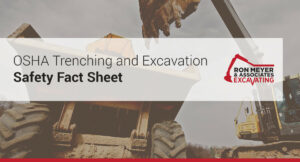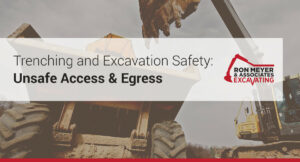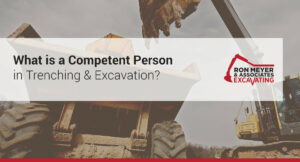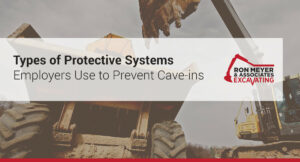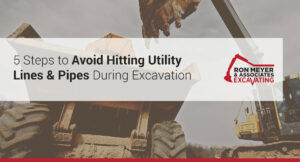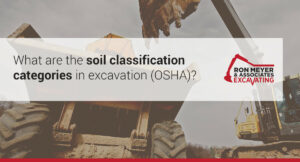http://www.mdprestaurants.com/viagra7662.html Trenching and Excavation Safety Two workers are killed every month in trench collapses.The employer must provide a workplace free of recognized hazards that may cause serious injury or death. The employer must comply with the trenching and excavation requirements of 29 CFR 1926.651 and 1926.652 or comparable OSHA-approved state plan requirements. An excavation is […]
Trenching and Excavation Safety: Unsafe Access & Egress
Cave-ins are perhaps the most feared trenching hazard. But other potentially fatal hazards exist, including asphyxiation due to lack of oxygen in a confined space, inhalation of toxic fumes, drowning, etc. Electrocution or explosions can occur when workers contact underground utilities. OSHA requires that workers in trenches and excavations be protected, and that safety and […]
OSHA: What is a Competent Person in Trenching & Excavation?
A competent person is an individual, designated by the employer, who is capable of identifying existing and predictable hazards in the surroundings or working conditions which are unsanitary, hazardous or dangerous to workers, and who is authorized to take prompt corrective measures to eliminate them. Under the Excavation standards, tasks performed by the competent person […]
Types of Protective Systems Employers Use To Prevent Cave-ins
In many cases the type of protective system needed is well known and simple to use. At other times employers will undertake the more complex process of designing a protective system. Designing a protective system requires consideration of many factors, including: soil classification, depth of cut, water content of soil, weather and climate, and other […]
5 Steps to Avoid Hitting Utility Lines & Pipes During Excavation
To help prevent hitting underground utility lines and pipes during excavation, the OSHA Excavation standards require employers to do the following: Determine the approximate location(s) of utility installations — including sewer, telephone, fuel, electric, and water lines. One common industry practice is to call 811, the “Call Before You Dig” number, to establish the location […]
What are the soil classification categories in excavation? (OSHA)
Some of the compliance methods permitted under the Excavation standards require a competent person to classify soil and rock deposits as: Stable rock Type A soil Type B soil Type C soil Stable Rock Natural solid mineral matter that can be excavated with vertical sides and remain intact while exposed. Type A Cohesive soils with […]
- « Previous Page
- 1
- …
- 15
- 16
- 17
- 18
- 19
- 20
- Next Page »
